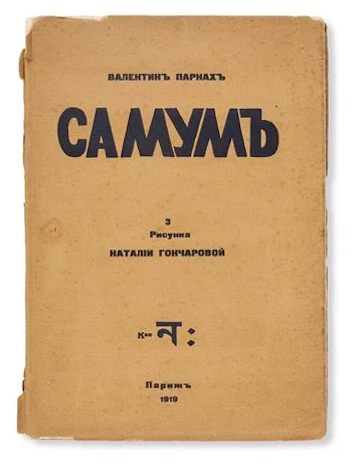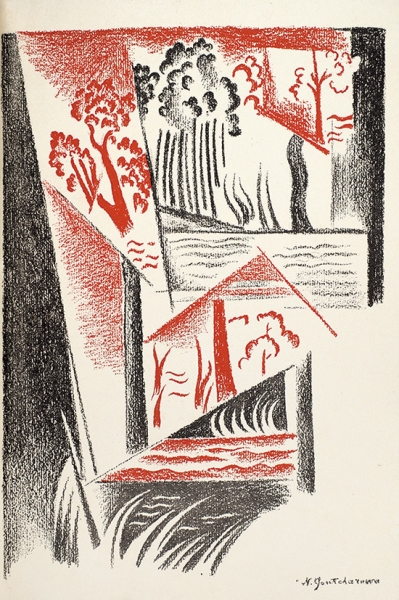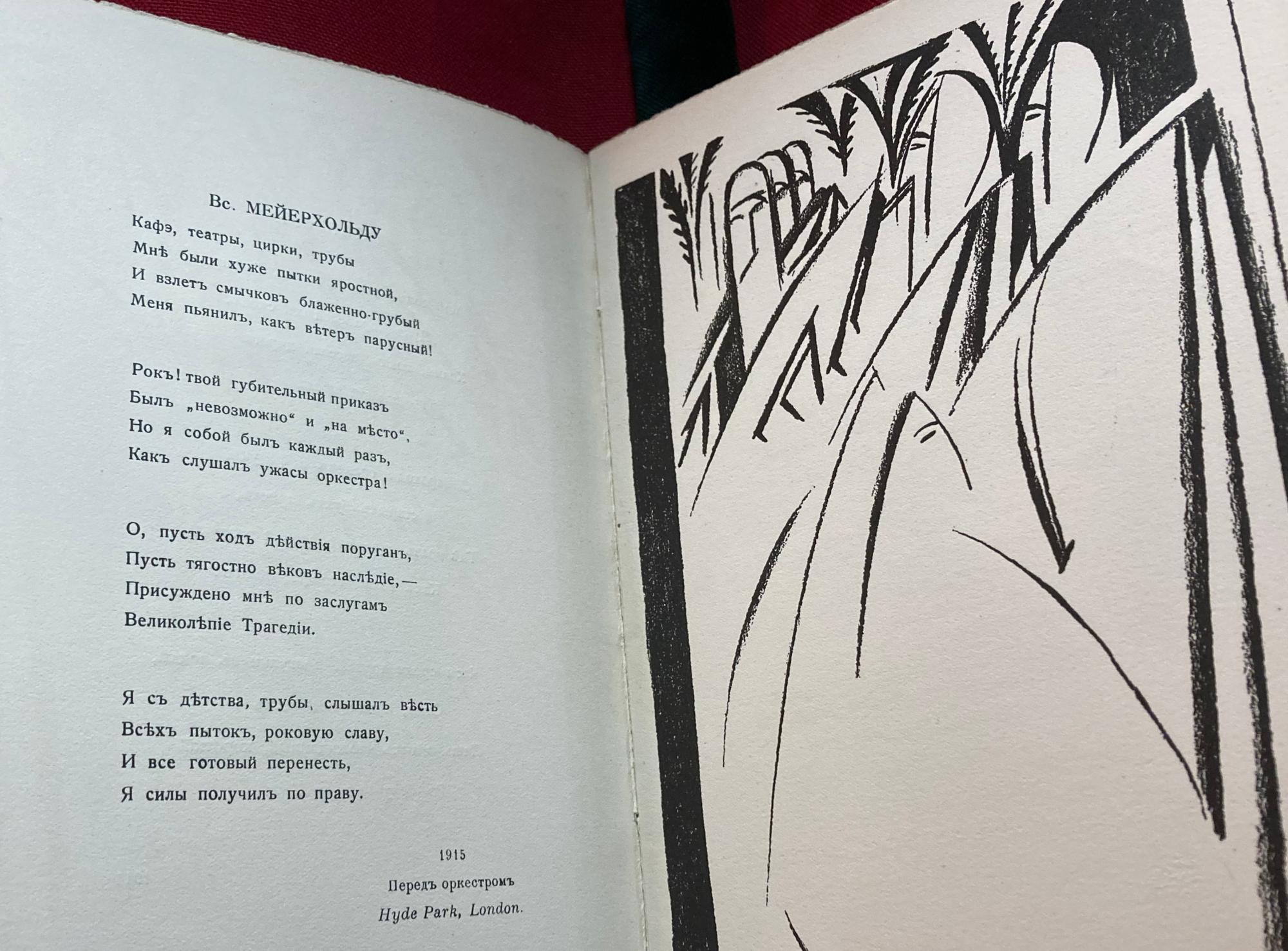PARNAK, Valentin. Samum [Самумъ, With lithography illustrations by N. Goncharova and M. Larionov. — Paris, La Cible [Мишень], 1919-1920. Printed at Polyglotte N. L. Danzig publishing house, 26, Rue des Francs-Bourgeois.
Octavo (229 x 160 mm). 43 pp. with 3 unnumbered leaves of plates (one monochrome, two in two colors).

According to V. Polyakov in his book Books of Russian Futurism [Книги русского футуризма], Larionov and Goncharova, after moving to Paris, established a small publishing house, La Cible (Мишень or The Target), where they would publish Russian poetry with their own illustrations. Particularly productive was Larionov and Goncharova’s collaboration at La Cible with Valentin Parnak (1891-1951), a dancer, poet, and a head of the literary group of the Russian emigrants in Paris, the Chamber of Poets. He traveled in Arabia and Palestine, Spain, Egypt and Sicily, searching for and studying traces of ancient and medieval Jewish culture, while in European libraries and archives he discovered a body of poetry composed mainly by Jewish victims of the Inquisition who wrote in Spanish and Portuguese. In 1919-1920, three books of his poems were published by the artists: Samum (1919-1920), Motdinamo (1920), and Karabkaetsa Akrobat (1922).

Samum is the first edition of Parnak’s poetry in France. For Samum (the word means a dry, sweltering wind in the deserts of Arabia and North Africa, blowing in squalls and creating sandy whirls), Gocnharova made three lithographs for the flamboyant poems of Samum about Parnak’s years in Russia, life and experience in Spain and Italy, and about his close friends, including the major Russian artists and poets of the Silver Age. Some of the poems are dedicated to Goncharova and Larionov themselves. The poems frequently mix Russian words with French sounds, written in Cyrillic alphabet — a common practice of mixing different alphabets and symbols in Russian futurist poems and books for which Goncharova used to draw her daring illustrations on the early 1910s. All the poems are connected by the nostalgic, longing tone over the poet’s past in his homeland that is gone forever — the sentiments that Goncharova and most of the other representatives of the Russian emigration shared strongly.

The frontispiece black-and-blue lithograph is taken from the earlier or contemporary edition of L’art décoratif théâtral moderne, commented by the same author. The composition of this illustration resonates with her paintings in the rayonist and futurist styles. Also, the unfolding geometric lines of the headscarf and the fleeting and wavy, as if unfinished, forms of the lithograph resemble paintings and book illustrations by Pablo Picasso and Marc Chagall respectively. Goncharova met both artists in Paris and their influence on her art is particularly visible in this book.
- L’art décoratif théâtral moderne
- Samum
- Motdinamo
- Transparent Shadows and Forms
- Twelve. Scythians.
- Gorod (City)
- Conte de Tsar Saltan
- The Russian Ballet in Western Europe 1909-1920
- Tale of Prince Igor
- L’Annonciation: Roman
- Le thé du capitaine Sogoub
- Les Montparnos
- Les Ballets Russes de Serge de Diaghilew
- Skazki (Fairytales)
